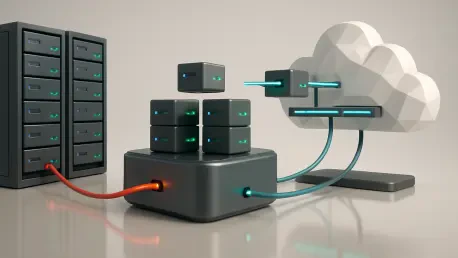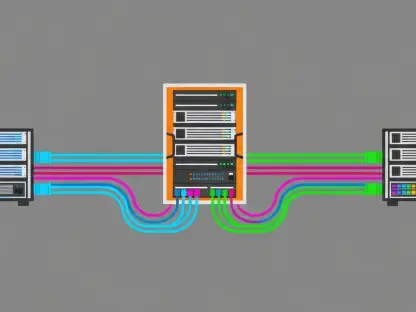Threat responders described the last twelve months as a blur of ransomware, rushed failovers, and boardroom pressure to prove recovery readiness while still enabling AI projects that demand clean, portable data. In that climate, this roundup examines how voices across security, cloud architecture, and channel delivery sized up Veeam Data Platform v13: a release pitched as faster, more open, and more intelligent. The aim is simple—compare what different practitioners see in v13, where they disagree, and what actions now separate resilient operators from the rest.
Why Speed and Openness Now Define Enterprise Resilience
From retailers juggling edge footprints to banks navigating regional sovereignty, respondents agreed that resilience now hinges on two pillars: speed and choice. Instant recovery is no longer a convenience; it is a governance requirement when outages cascade into revenue loss and compliance risk within minutes. Equally, platform choice shields teams from vendor policy swings, price shocks, and architectural dead ends.
Several leaders added a third leg: AI-aware security. Recovery workflows increasingly feed AI initiatives, which amplifies the need for verifiably clean, labeled, and portable data. V13’s framing—faster clean recoveries, broader platform reach, and intelligence at the core—tracked with this shift, though a few warned that “intelligent” tools still require rigorous tuning and clear ownership to avoid alert fatigue.
Lastly, partners emphasized how these themes converge operationally. Rapid Azure failover, flexible hypervisor coverage, and automated assurance let teams prove outcomes rather than promise them. However, they flagged the soft issues—skills gaps, runbook debt, and cross-team coordination—as the real friction points that can blunt tool advantages.
Inside Veeam Data Platform v13: How the Release Reshapes Recovery and Risk
Instant Azure Recovery With Secure Cleanrooms: Cutting Downtime While Proving Recoverability
Disaster recovery specialists praised v13’s true instant recovery into Microsoft Azure, calling the secure cleanroom capability a practical way to validate that backups are usable and malware-free. By isolating workloads for automated checks, teams cut guesswork and shorten the path from “backup exists” to “business service is clean and online.”
Operations leaders cited gains after ransomware drills: faster failover, clearer audit trails, and fewer manual handoffs. Some partners reported that cleanroom validation reassured auditors who increasingly demand evidence of recoverability, not just retention. Yet cloud economists cautioned about egress costs and misconfigured landing zones, urging financial guardrails and capacity planning to avoid surprise bills.
Runbook complexity surfaced as the main hurdle. Several respondents recommended progressive staging—start with tier‑1 apps, standardize dependencies, then expand—so teams learn in small, safe increments. Cloud readiness assessments also mattered; poorly mapped identities, networks, or storage tiers undercut the speed benefits that instant recovery promises.
Open Virtualization Without Lock-In: Broader Hypervisor Support and a Universal Integration Path
Virtualization admins welcomed present support for Scale Computing HyperCore and the near‑term additions of HPE Morpheus VM Essentials, Citrix XenServer, and XCP‑ng. The headline for many was portability: the ability to move and protect workloads across on‑prem and cloud without rewriting the playbook.
Architects viewed the universal hypervisor integration API as a strategic hedge. Standardized backup hooks allow new or niche hypervisors to plug in cleanly, which reduces retooling during mergers, regional expansions, or edge rollouts. In competitive terms, openness pressures closed ecosystems that monetize lock‑in rather than outcomes.
Skeptics raised migration risks—driver quirks, performance drift, and skills churn. Their guidance centered on reference architectures, staging environments, and rollback plans. Even so, the consensus held that openness future‑proofed mixed estates better than any single‑stack bet.
Intelligence-Led Protection: Recon Scanner 3.0, Threat Validation, and Automated Assurance
Security teams highlighted Recon Scanner 3.0 as a step toward earlier anomaly detection and post-incident validation at scale. By pairing scanning with policy-driven recovery testing, v13 helps convert periodic audits into continuous assurance, reducing the gray area between “possible compromise” and “clean restore.”
Regulated industries noted data residency and segregation needs; automated cleanrooms and scoped policies helped align with regional mandates without slowing operations. Automation also reduced human error, especially in high-stress recoveries where manual steps often introduce new faults.
Multiple voices pushed back on the “air gap alone is enough” doctrine. An air‑gapped copy is necessary, they argued, but not sufficient without verifiable cleanliness and repeatable, tested runbooks. Intelligence closes that gap by proving—not assuming—recoverability.
Modernization With an AI Runway: Workload Mobility, Governance, and the Road to a Data and AI Command Platform
Cloud strategists connected v13’s workload mobility to broader modernization: container adoption, hybrid operations, and AI pipelines that rely on trustworthy, portable data. Plans for native host-based backup and recovery for Red Hat OpenShift Virtualization, alongside existing Kasten support, positioned Veeam as a bridge across VM and container worlds.
Compared with traditional DR tooling, respondents favored v13’s open, API‑first posture. It reduced bespoke integration work and created a governance spine that can extend into AI oversight—lineage, access control, and recovery assurance. That foundation, several said, points toward a cohesive data and AI command platform rather than another silo.
The shared view was pragmatic: modernization should improve control as well as speed. Mobility patterns, consistent tagging, and standardized protection workflows keep innovation aligned with risk tolerance, especially when AI projects accelerate.
Turning Strategy Into Action With v13
Practitioners converged on three takeaways: clean recoveries must be demonstrable, ecosystems should remain open by design, and intelligence belongs in the recovery path—not bolted on after an incident. The result is faster time to restore, broader platform reach, and fewer blind spots during audits.
Execution started with living runbooks for Azure instant recovery, frequent cleanroom drills, and Recon Scanner 3.0 enabled under clear ownership. Teams then standardized integrations through the hypervisor API and documented mobility patterns that map to business tiers, ensuring repeatable outcomes across regions and platforms.
For day‑to‑day guidance, respondents mapped recovery tiers, quantified RTO/RPO targets, aligned governance with AI initiatives, and engaged channel partners for phased rollout. The pattern rewarded consistency: small, frequent tests beat sprawling, annual heroics.
The Road Ahead: Open Resilience as an Enduring Advantage
This roundup showed how v13 blended security, portability, and automation into a resilient operating model that met today’s ransomware pressure, virtualization fragmentation, and AI-driven change. Participants emphasized that the edge went to teams treating recovery as a product—tested often, measured relentlessly, and improved continuously.
It also underscored near‑term priorities: bake cleanroom validation into every tier‑1 workflow, expand hypervisor support using the universal API, and thread intelligence through detection, testing, and restore. Suggested next steps included establishing cost guardrails for cloud recoveries, elevating runbook ownership, and wiring recovery evidence into compliance reporting.
In closing, the discussion pointed toward building a unified data and AI command platform from the ground up—using v13’s speed, openness, and assurance as the backbone. Further reading was best directed at incident postmortems, cloud cost governance patterns, and playbooks for regulated recoveries, which had offered practical depth beyond marketing claims.









